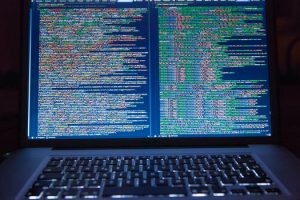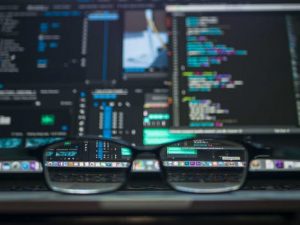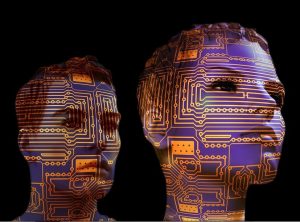We live in a world of data. Everywhere we turn, it’s there. It’s bringing us to the future. Here are the key trends in the world of Big Data and Data Science in 2018.
 Did you know the world of technology generates about 2.5 billion gigabytes of data daily? Seems astounding, isn’t it? But here’s the twist: this is a 2012 information from IBM.
Did you know the world of technology generates about 2.5 billion gigabytes of data daily? Seems astounding, isn’t it? But here’s the twist: this is a 2012 information from IBM.
If that figure amazed you, prepare to be shaken up by a prediction published in an article by Forbes. It mentioned the growth of data at an astonishing rate. It’s so amazing that it’s borderline fiction.
This is what you can expect. There will be around 1.7 megabytes of new data that will be created every second for every person on this planet.
About 1.7 megabytes of new data. Every second. For every human being.
Which is why it’s important to know the basics of data. Because this is where we, as a race, are heading. This is where our future lies.
Before we proceed any further with the article, it’s important to distinguish these terms. These words will keep on coming back in this discussion.
Table of Contents
What is Big Data? What is Data Science?
In this article, we will discuss what are these and where are they used.
We use Big Data to analyze insights and to come up with better decisions. It is a crucial asset when making well-informed, strategic business moves. On the other hand, Data Science comprises anything that is connected with data preparation, cleansing, and analysis.
Here’s another one element that goes hand in hand with the two aforementioned terms. Data Analytics is the automation of insights into a set of information. It involves data aggregation and usage of queries.
Where are Big Data and Data Science used?
Industries in retail, communication, and finance can benefit from Big Data. Meanwhile, using Data Science algorithms can be advantageous for those in industries like digital advertisements; it is also useful for internet searchers and search recommenders.
Big Data
 Big Data is a buzzword that pertains to a huge volume of data that can’t be processed using conventional applications. The immense amount of information may pertain to both structured and unstructured data.
Big Data is a buzzword that pertains to a huge volume of data that can’t be processed using conventional applications. The immense amount of information may pertain to both structured and unstructured data.
How big of a volume is it in order to be classified as Big Data? Imagine a set of information so humongous that you can’t sort or organize it effectively using today’s traditional software. With that extremely large data, it can be impossible to store it in a single computer.
But volume is not the only measuring stick when determining if the information is Big Data or not. By definition, Big Data is a high-volume, high-velocity, and high-variety set of information. The vast amount of information demands cost-effective, innovative ways to process the data.
With that large amount of data, users are able to have enhanced insight and make intelligent decisions. But only when they are able to sort and process it. With Big Data comes the need for an innovative application that can effectively organize it.
Data Science
 Data Science deals with structured and unstructured data.
Data Science deals with structured and unstructured data.
It involves everything related to data preparation, cleansing, and analysis. Thus, Data Science combines mathematics, statistics, programming, and problem-solving. Then it joins all that to arrive at ingenious ways to capture data. It can be a very complex process.
Simply put, Data Science is about looking at things differently. It covers all techniques for extracting information from data.
Big Data and Data Science Trends in 2019
As we bid farewell to 2017, we welcome new developments in Big Data and Data Science. The progress came in hot and fast, making its huge mark in 2018. In this segment, we will look into the most important developments of 2017. In the same way, we will highlight the progress made so far in 2018 as well as the key trend predictions.
Here at Blockgram, we try to keep our finger on the pulse of latest happenings in Big Data and Data Science. We do our best to stay up-to-date with the main events and developments. We look into the industry’s evolution, focusing on the technology and academia.
Key Developments of Big Data
 We recently talked with experts in Big Data and Data Science. Also part of the discussion were the fields of artificial intelligence and machine learning. Our team sought their opinion on what they deemed were the most crucial developments in the field for 2017. We also asked them on what to expect in Big Data and Data Science for 2018.
We recently talked with experts in Big Data and Data Science. Also part of the discussion were the fields of artificial intelligence and machine learning. Our team sought their opinion on what they deemed were the most crucial developments in the field for 2017. We also asked them on what to expect in Big Data and Data Science for 2018.
Their response were interesting.
2017’s trend focused on four major themes:
1. Privacy and security
2. The enhanced role of cloud in data management
3. Neutralizing the hype and inflated expectations
4. Recognizing the important role of the Internet of Things in generating data
The term “Big Data” no longer has a meaning as what it used to have. The nomenclature was lost especially today when day-to-day data is already assumed to be big.
However, the concept of “Big Data” remains. Experts maintain there is still a need to properly manage the humongous set of information. Also it remains important to distinguish it from small data repositories.
What to Expect of Big Data
One of the first things to expect if Big Data in 2018 is a change of name. According to Marcus Borba, a Data and Analytics Expert and founder of Borba Consulting, we will likely drop “Big” from the term.
“We are increasingly less likely to use the term big data,” Mr. Borba said, adding we will just call it Data.
A Shift Toward Business-Driven Data
He expects a shift in approach too. From Big Data departmental approach, we will see an evolution toward a business-driven data approach. The latter will focus on the agility on the use of Big Data analytics capabilities. This will help drive initial and long-term business value.
Artificial Intelligence and Machine Learning
2018 will also be the year when Big Data will converge with other technologies. Artificial intelligence will significantly improve as machine learning will be increasingly applied in day-to-day usage.
There will also be an increase in the adoption of cloud-first strategy in Big Data analytics. Eventually there will be more smart technological capabilities that will be introduced in varied business solutions.
Hybrid Data Management
Craig Brown, PhD, also spoke about the expectations and trends for Big Data in 2018. He is a social media influencer, a technology mentor, and an expert in Big Data, Data Science, and related data technologies.
Based on what he has observed in 2017, he believes there is a new trend toward the use of hybrid data management and hybrid cloud. However, Big Data will still be a huge part of the strategy.
4 Biggest Innovations in Big Data You’ll See
Did you know data will soon replace gold as the most essential commodity? Undoubtedly it is one of today’s most important assets. After all, information technology is the gateway to mankind’s future. So here are the innovations in store for us in 2018 for Big Data innovations.
Improved Accessibility with Artificial Intelligence
From chatbots to critical thinking applications, AI programs will be a common fixture, not just in giant conglomerates but also in SMEs.
Robots Will Get Smarter
Did you know Starbucks and MasterCard have robots that handle some aspects of their business? The popular coffeehouse chain have chatbots that receive orders. MasterCard, on the other hand, has automated response bots that reply to queries.
Starbucks and MasterCard are just two of the best examples on the use of automated chatting applications that interact with web visitors in a more personalized manner. So personalized that customers don’t realize they are talking to a robot.
New tools allow chatbots and similar automated programs to convey words with a more natural tone and language. In effect, this gives us a better communication experience.
In addition to this communication feature, chatbots will get smarter. These applications will collect and analyze new customer data, enriching their knowledge base. These robots are learning how to learn. In fact, new programs introduce another feature that teaches these bots how to negotiate too.
2018 will also see an increase in the use of AI-governed applications. According to statistics, businesses can save up to $0.70 for every AI interaction. Thus, creating a more promising alternative to conventional customer support solutions.
Faster, More Accurate eCommerce Transactions
2018 holds a lot of potential for product searching and shopping. Big Data programs offer a highly effective platform for customer data. These automated applications offer faster, more accurate transactions as it cuts response time down to milliseconds.
With Big Data systems in place, there is minimal to no need for human intervention. AI tools will simply crawl through the database to check the inventory and produce accurate search results.
These automated eCommerce tools are also capable of learning new trends. They track down customer preferences for certain merchandise and use that information to predict trends. AI will analyze each click and add that new information to its database.
The Internet of Things Will Continue to Grow
There will be more responsive devices that will be connected to a smarter network in the years to come. Experts speculate total business investments toward the Internet of Things will reach up to $6 trillion by 2021. Big Data applications will spearhead this massive development.
Data Science Trends
Like Big Data, Data Science will massive use and development in 2018. We can look forward to an overlapping of the physical world and the digital realm. This will result in improved connectivity where humans, machines, data, and businesses will become closely intertwined.
Here are predictions and trends for Data Science in 2018.
Widespread Adoption of Artificial Intelligence
 AI will be a crucial component in business processes. It will enhance decision making, reinvent customer service, and improve overall the business ecosystem. Today we are seeing the growing adoption of AI applications in enterprises.
AI will be a crucial component in business processes. It will enhance decision making, reinvent customer service, and improve overall the business ecosystem. Today we are seeing the growing adoption of AI applications in enterprises.
The current trend is the use of virtual services like chatbots and digital assistants. In the next several years, we will have an increased integration of AI elements. These apps and services will enhance operational performance and add value to businesses.
We can also expect the adoption of smarter robots and more intelligent platforms. This will put the notch up in terms of data processing, delivery of results, improved business performance.
Enhanced Data Security
Every day we become more reliant on AI, interconnectivity, and smart technology. As security threats progress from imminent to being actual, there is an increased need to protect these technology assets. Thus, in 2018, we can look forward to enhanced cyber security features.
One of the latest developments in cyber security is the tech strategy known as Continuous Adaptive Risk and Trust Assessment (CARTA).
Cyber security threats are increasingly becoming sophisticated and frequent. The ecosystem becomes more complex because it can be difficult to tell the good guys from the bad. Malicious insiders now know how to masquerade as the good guys and infiltrate the IT infrastructure. Then they steal whatever valuable information they can find.
Thus, the traditional method of shielding the IT assets is no longer effective.
With the CARTA approach, enterprises can recognize the ever-changing elements in the IT landscape. There is an ongoing real-time assessment of threats. And based on the gathered information, companies can make well-informed decisions on cyber security.

